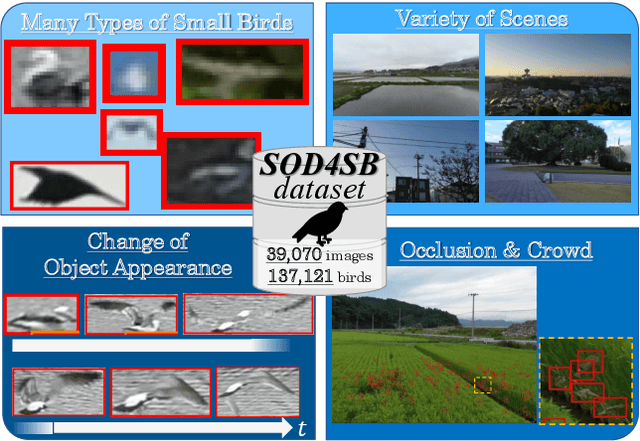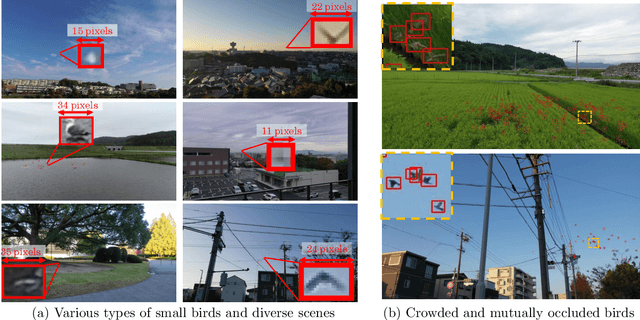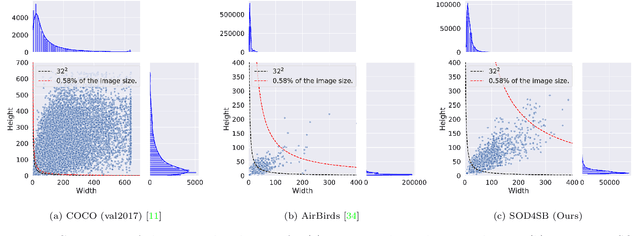Tingwei Liu
DefMamba: Deformable Visual State Space Model
Apr 08, 2025Abstract:Recently, state space models (SSM), particularly Mamba, have attracted significant attention from scholars due to their ability to effectively balance computational efficiency and performance. However, most existing visual Mamba methods flatten images into 1D sequences using predefined scan orders, which results the model being less capable of utilizing the spatial structural information of the image during the feature extraction process. To address this issue, we proposed a novel visual foundation model called DefMamba. This model includes a multi-scale backbone structure and deformable mamba (DM) blocks, which dynamically adjust the scanning path to prioritize important information, thus enhancing the capture and processing of relevant input features. By combining a deformable scanning(DS) strategy, this model significantly improves its ability to learn image structures and detects changes in object details. Numerous experiments have shown that DefMamba achieves state-of-the-art performance in various visual tasks, including image classification, object detection, instance segmentation, and semantic segmentation. The code is open source on DefMamba.
CriDiff: Criss-cross Injection Diffusion Framework via Generative Pre-train for Prostate Segmentation
Jun 20, 2024



Abstract:Recently, the Diffusion Probabilistic Model (DPM)-based methods have achieved substantial success in the field of medical image segmentation. However, most of these methods fail to enable the diffusion model to learn edge features and non-edge features effectively and to inject them efficiently into the diffusion backbone. Additionally, the domain gap between the images features and the diffusion model features poses a great challenge to prostate segmentation. In this paper, we proposed CriDiff, a two-stage feature injecting framework with a Crisscross Injection Strategy (CIS) and a Generative Pre-train (GP) approach for prostate segmentation. The CIS maximizes the use of multi-level features by efficiently harnessing the complementarity of high and low-level features. To effectively learn multi-level of edge features and non-edge features, we proposed two parallel conditioners in the CIS: the Boundary Enhance Conditioner (BEC) and the Core Enhance Conditioner (CEC), which discriminatively model the image edge regions and non-edge regions, respectively. Moreover, the GP approach eases the inconsistency between the images features and the diffusion model without adding additional parameters. Extensive experiments on four benchmark datasets demonstrate the effectiveness of the proposed method and achieve state-of-the-art performance on four evaluation metrics.
Tracking Small Birds by Detection Candidate Region Filtering and Detection History-aware Association
May 27, 2024Abstract:This paper focuses on tracking birds that appear small in a panoramic video. When the size of the tracked object is small in the image (small object tracking) and move quickly, object detection and association suffers. To address these problems, we propose Adaptive Slicing Aided Hyper Inference (Adaptive SAHI), which reduces the candidate regions to apply detection, and Detection History-aware Similarity Criterion (DHSC), which accurately associates objects in consecutive frames based on the detection history. Experiments on the NUBird2022 dataset verifies the effectiveness of the proposed method by showing improvements in both accuracy and speed.
MVA2023 Small Object Detection Challenge for Spotting Birds: Dataset, Methods, and Results
Jul 18, 2023



Abstract:Small Object Detection (SOD) is an important machine vision topic because (i) a variety of real-world applications require object detection for distant objects and (ii) SOD is a challenging task due to the noisy, blurred, and less-informative image appearances of small objects. This paper proposes a new SOD dataset consisting of 39,070 images including 137,121 bird instances, which is called the Small Object Detection for Spotting Birds (SOD4SB) dataset. The detail of the challenge with the SOD4SB dataset is introduced in this paper. In total, 223 participants joined this challenge. This paper briefly introduces the award-winning methods. The dataset, the baseline code, and the website for evaluation on the public testset are publicly available.
Dual Node and Edge Fairness-Aware Graph Partition
Jun 16, 2023



Abstract:Fair graph partition of social networks is a crucial step toward ensuring fair and non-discriminatory treatments in unsupervised user analysis. Current fair partition methods typically consider node balance, a notion pursuing a proportionally balanced number of nodes from all demographic groups, but ignore the bias induced by imbalanced edges in each cluster. To address this gap, we propose a notion edge balance to measure the proportion of edges connecting different demographic groups in clusters. We analyze the relations between node balance and edge balance, then with line graph transformations, we propose a co-embedding framework to learn dual node and edge fairness-aware representations for graph partition. We validate our framework through several social network datasets and observe balanced partition in terms of both nodes and edges along with good utility. Moreover, we demonstrate our fair partition can be used as pseudo labels to facilitate graph neural networks to behave fairly in node classification and link prediction tasks.
 Add to Chrome
Add to Chrome Add to Firefox
Add to Firefox Add to Edge
Add to Edge